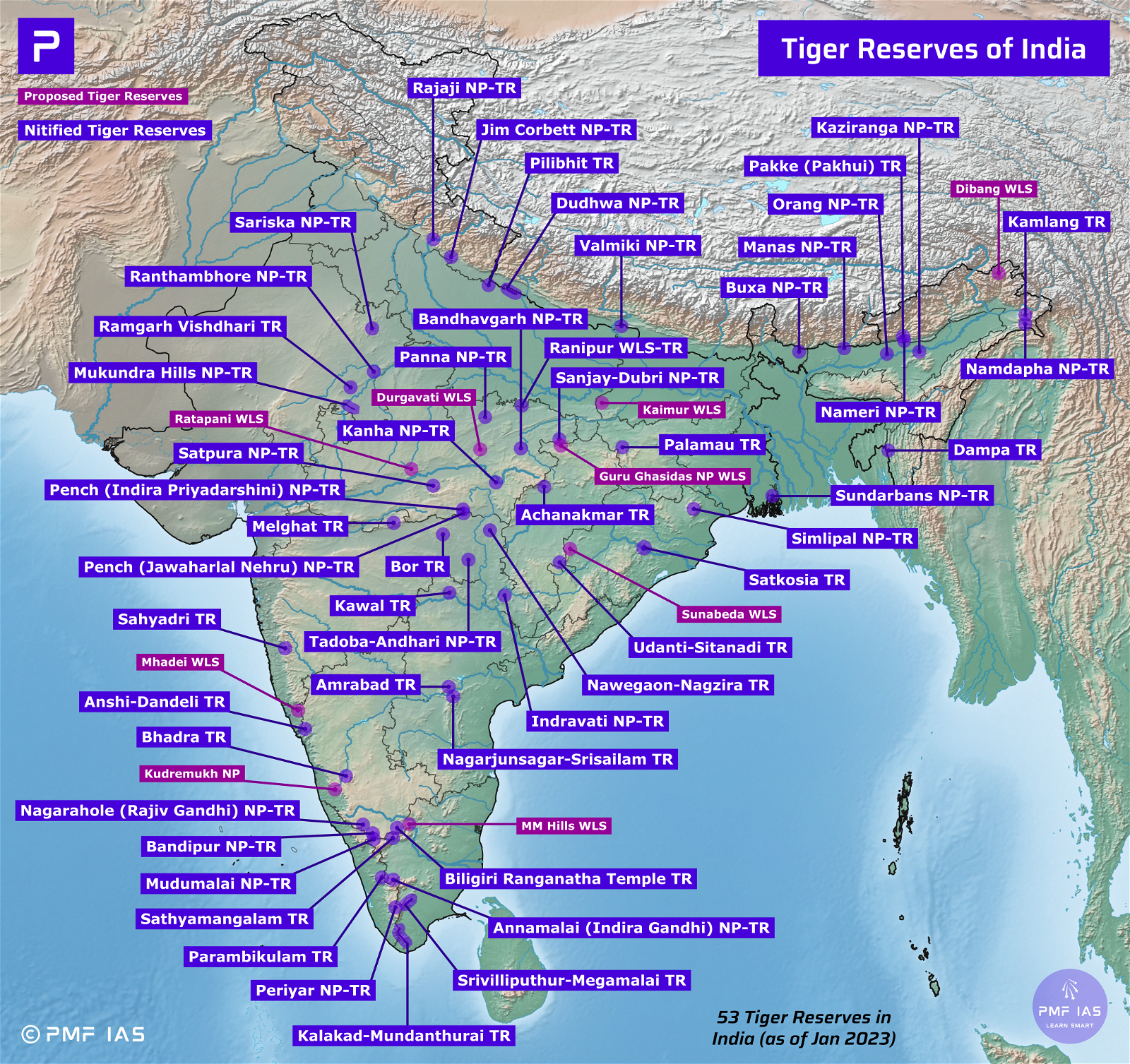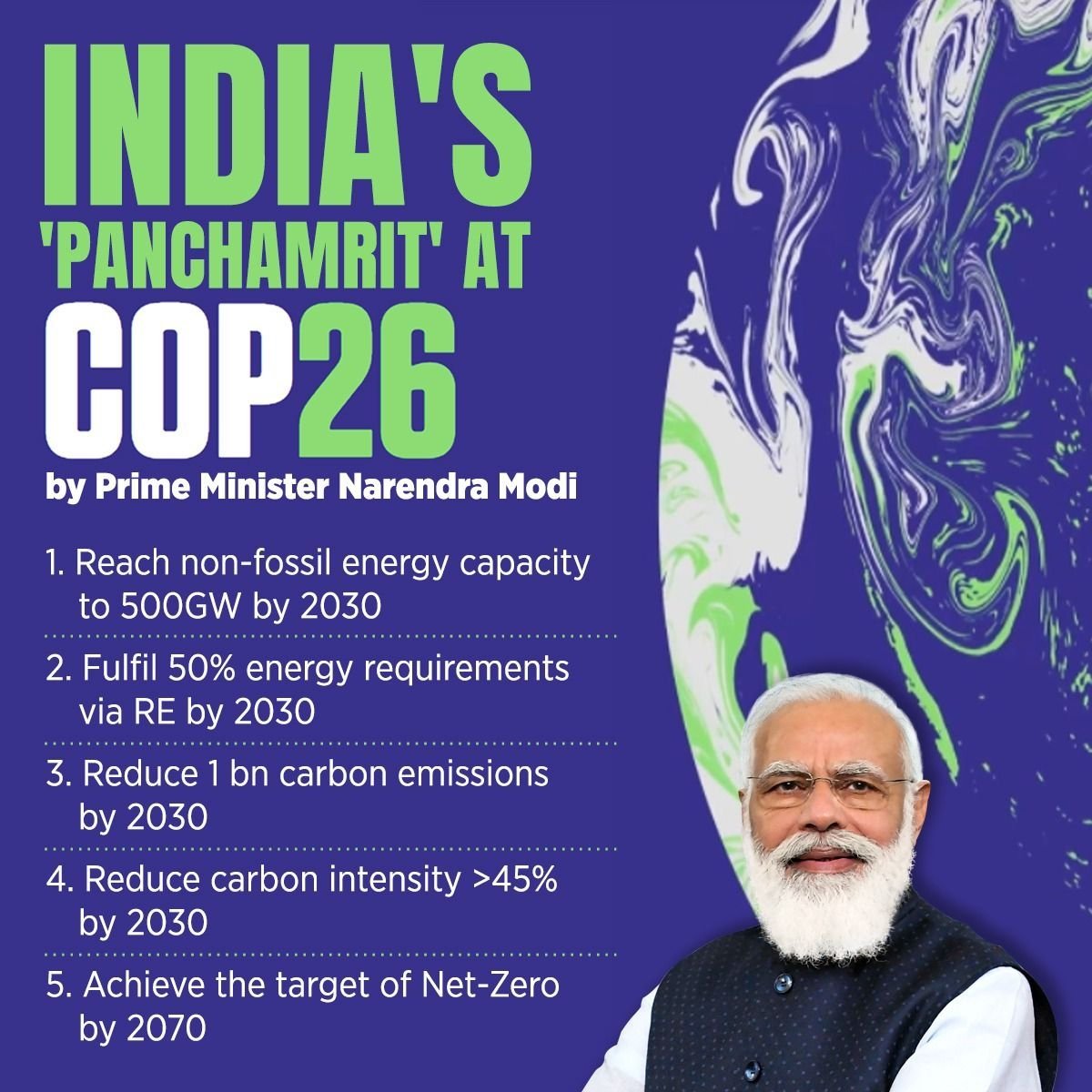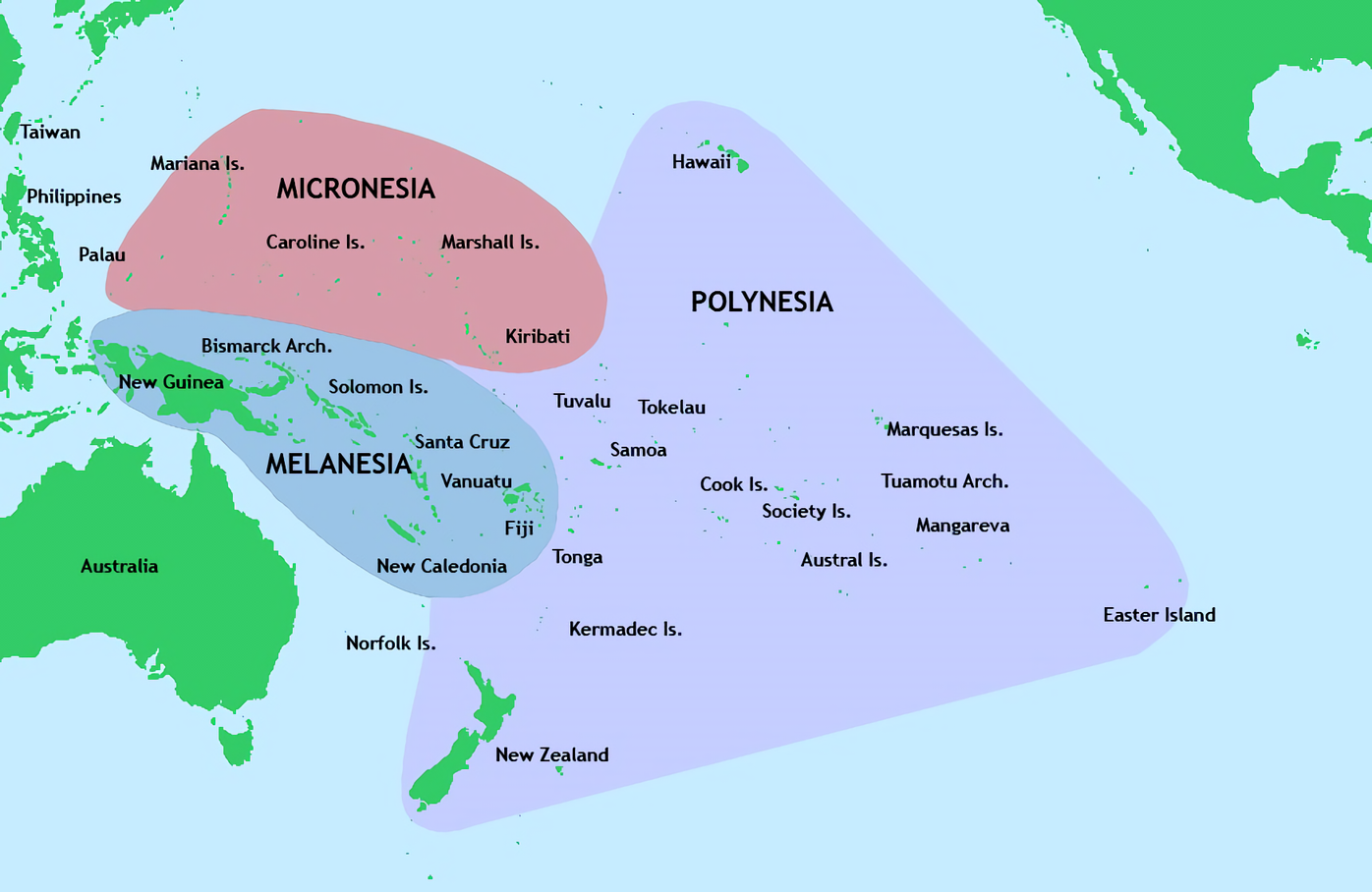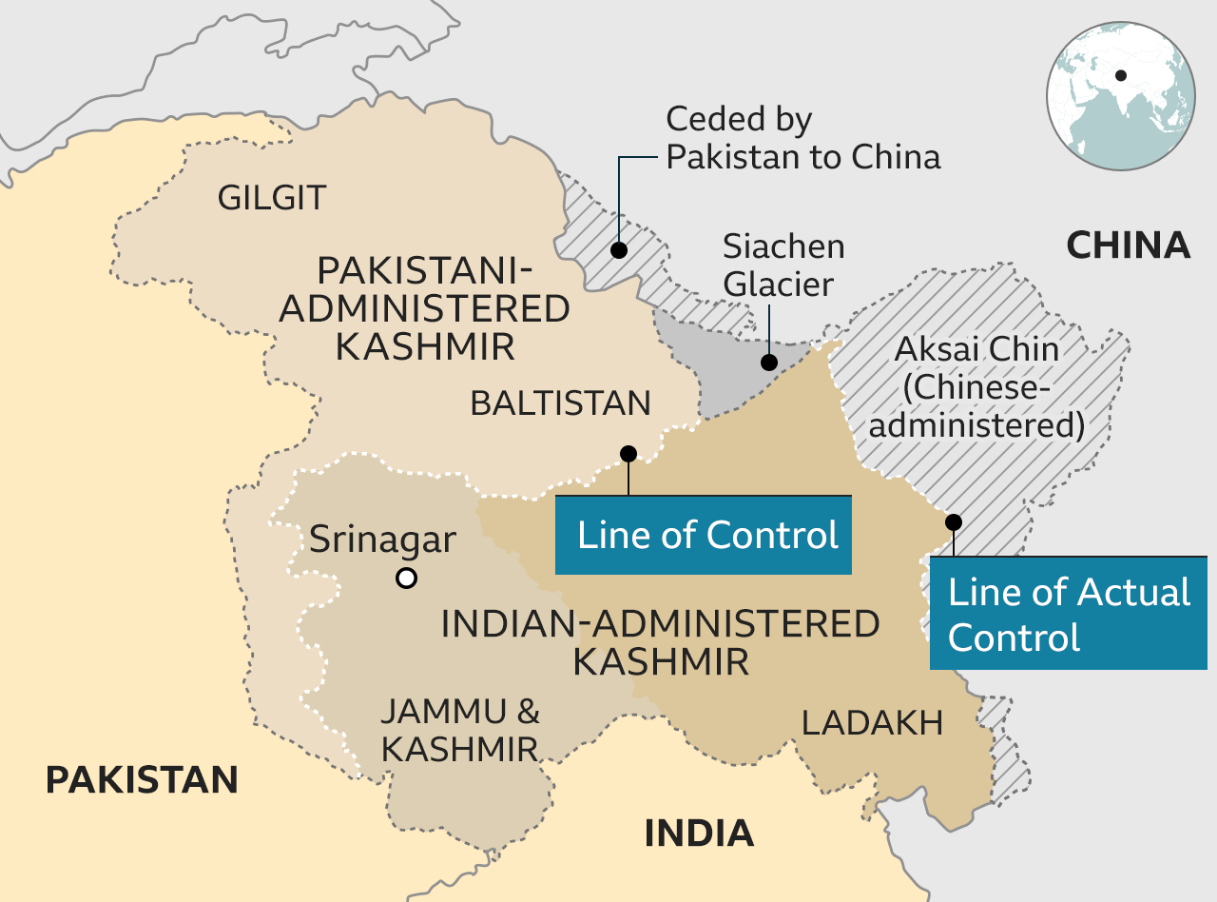
Current Affairs for UPSC Civil Services Exam – March 24, 2024
Subscribers of "Current Affairs" course can Download Daily Current Affairs in PDF/DOC
Subscribe to Never Miss an Important Update! Assured Discounts on New Products!
Must Join PMF IAS Telegram Channel & PMF IAS History Telegram Channel
{GS3 – Envi – Degradation} Bengaluru Water Crisis
- Context (ET | ToI | BT | IE | TH): Bengaluru, home to over 13 million people and a global IT centre, is facing a severe water shortage.
- According to India Today, there is no shortage of water in areas serviced by Cauvery Water. Those areas dependent on borewells have been facing a crisis as borewells have dried up.
- Of the nearly 13,900 borewells in Bengaluru, nearly 7,000 have dried up.
- Despite receiving over 900 mm of rainfall annually, the city struggles to store an adequate amount of water.
- Notably, Bengaluru is regarded as one of the most water-stressed cities globally, comparable to Cape Town, South Africa, which nearly faced a day zero scenario.
- A BBC report, based on UN projections, listed Bengaluru as second after Brazil’s São Paulo among the 11 global cities that are likely to run out of drinking water.
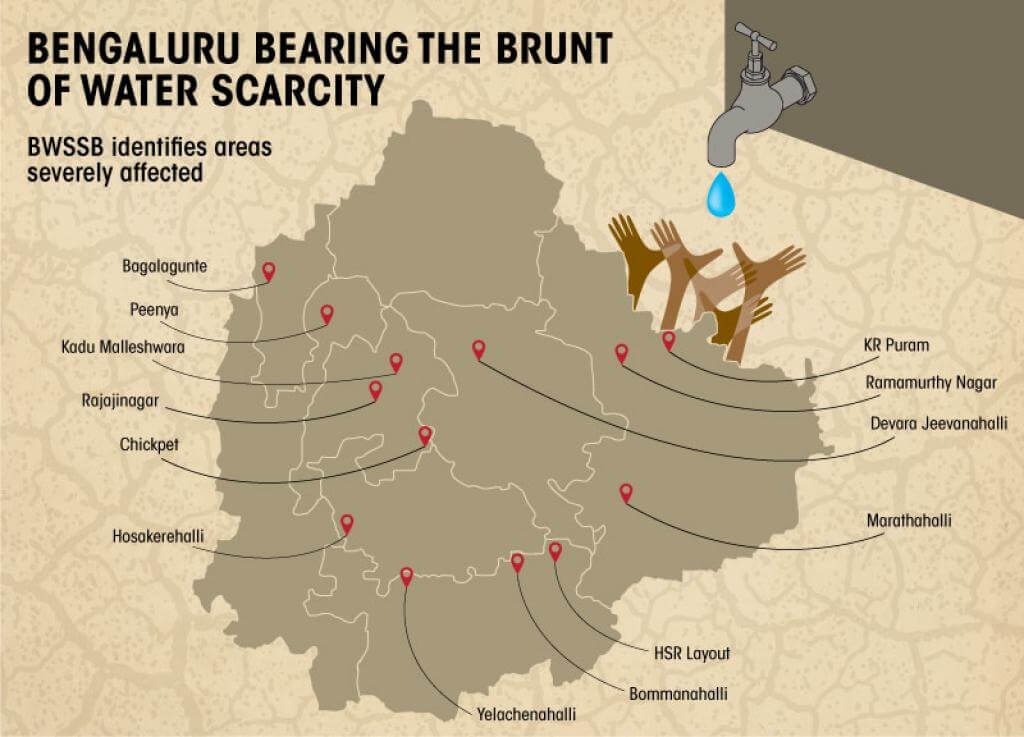
- Historically, inhabitants obtained water from ‘tanks’, which are excavations or dams designed to capture and store monsoonal rainfall.
- With rapid growth, the city has increasingly relied on water pumped from the river Cauvery.
- Also, Shallow wells are being replaced by deeper boreholes.
Water Sources for Bengaluru
- Bengaluru has two main sources of water.
- The river Kaveri (Cauvery).
- Groundwater (replenished by rainfall).
- Around half of the city’s water comes from its underground aquifer, but this has been so over-extracted that the city is sinking at a frightening rate.
- The remaining half of Bengaluru’s needs come from the Cauvery River, a reservoir 90 km away, which costs Rs 3 crore daily for pumping.
Cauvery Water
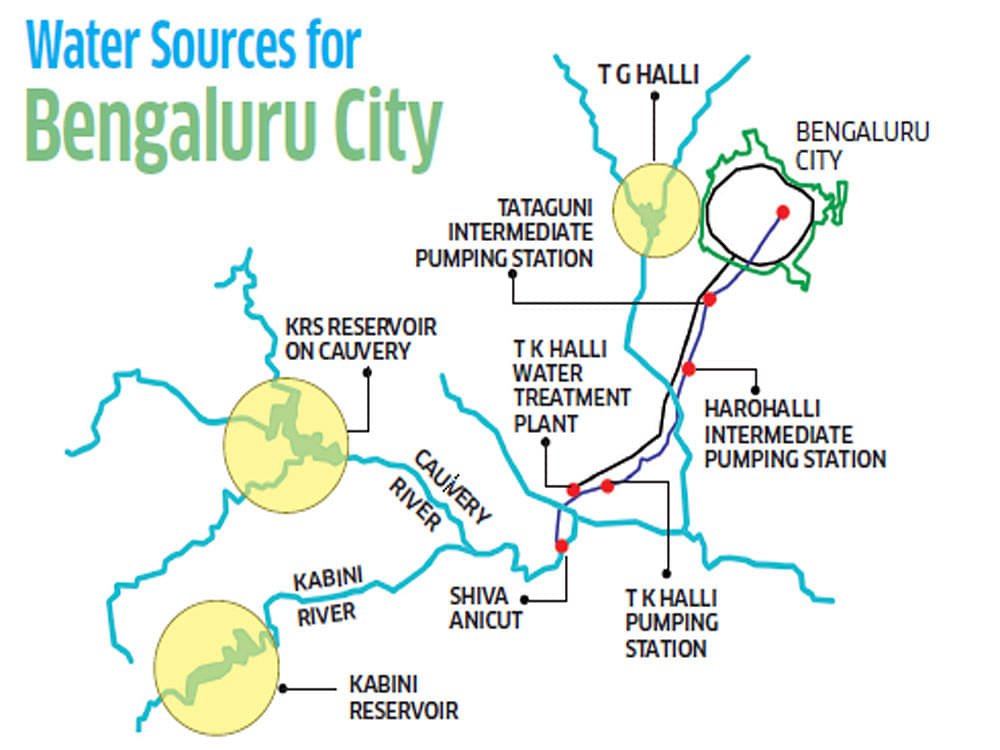
- Bengaluru has three pipelines connecting with the wider rural region:
- The Hesaraghatta pipeline (1890s).
- The TG Halli pipeline (1929-33).
- The Cauvery pipeline (1970s).
- The two ageing reservoirs, the 120-year-old Heseraghatta and 83-year-old Thippegondanahalli of Cauvery’s Arkavathi tributary is unreliable. Now Bengaluru is almost entirely dependent on the Cauvery River.
The Hesaraghatta pipeline
- In 1896, for the first time, water was drawn from the Arkavathi river (tributary of the Kaveri) and supplied to Bengaluru via the reservoir in Hesaraghatta.
- The design capacity of the reservoir was 21 MLD. Today, it does not supply even a drop of water.
The TG Halli Pipeline
- In 1933, water from the same tributary of the Cauvery was drawn to the TG Halli reservoir. This reservoir has a capacity of 149 MLD, but it no longer supplies water.
The Cauvery Pipeline
- 27 years after Independence, water was for the first time drawn from outside the city. The Cauvery Stage-I project was born.
- Since then, five more projects to bring water from Cauvery have been commissioned.
-
Water Distribution from Cauvery River
- Water from the Cauvery is collected in the Krishna Raja Sagar Dam (KRS) in Mysore.
- From KRS reservoir, Water is transported to T.K. Halli water treatment plant.
- After being treated, from T.K. Halli it flows to Tataguni via three pumping stations.
- From here, after checking the water for contamination, the BWSSB (Bangalore Water Supply and Sewerage Board) pumps water and transports it to over 660,355 BWSSB connections.
- Bangalore draws 1450 MLD of water per day from Cauvery.
Groundwater

- Groundwater is water collected in fissures between rocks deep underground, formed by rainwater trickling through soil and rocks.
- Aquifers Interconnected fissures in the rocks that create a single body of underground water.
- There are two types of aquifers from where water can be extracted: unconfined and confined aquifers.
- Unconfined aquifers are found in the second layer of the earth.
- This is just below the soil and is made up of crushed rocks that can hold water. Open bore wells that go up to a depth of 80 feet can access this water.
- Confined aquifers are found below the weathered layer in hard rock fissures. The water here is stored under high pressure.
- The aquifers contain a limited amount of water. Hence, they dry out over time. As the shallow borewells dry out, deeper borewells are dug to access water from confined aquifers.
- Current scenario: The groundwater is depleted in Bangalore.
- Rainfall: Close to 60% of the rainfall on average occurs during the southwest monsoon from June to September. The retreating, northeast monsoon also brings rain from October to December.
- The annual rainfall since 2020 has been over 1,200mm.
- However, in 2022, the city received 1,957mm of rainfall; the highest in 122 years.
Other Sources – Treated Water
- Used water may also be treated so that it can be re-used. Bengaluru has 14 Sewage Treatment Plants (STP) that can collectively treat about 721 million liters of water per day.
- STPs are mandatory for all apartment buildings constructed post-2007.
- Treated water can be used for gardening and landscaping, flushing toilets, cleaning, and many other ways.
Bengaluru’s Water Demand & Supply

- Total water demand: Bengaluru requires about 2,632 million litres per day (MLD), with residential use accounting for 72 per cent, industrial use 17 per cent, commercial/institutional use eight per cent, and construction two per cent.
-
Total Supply:
- Cauvery water: The city receives 1,460 MLD from the Cauvery River.
- Groundwater: The city draws an estimated 1,392 MLD from groundwater but naturally replenishes only 148 MLD through green spaces and water bodies.
Reasons for the Depletion of Ground Water resources
Natural
Geology: Bengaluru is situated on a fractured hard rock aquifer
- The granitic and gneissic bedrock has relatively low storage capacity. Also, the recharge rates are meagre, roughly 10 per cent of the rainfall.
- This is very different from the aquifers in north India, which have a much better capacity to hold water.
- This is why Bihar and Uttar Pradesh, which got even less rainfall last year than Karnataka, have not seen similar water scarcity.
Poor Rainfall in 2023
- Bengaluru has received just 24 mm of rain in August 2023, an 80 per cent deficit against the month’s average of 123 mm and the worst since at least 1971, (according to data from the Karnataka State Natural Disaster Monitoring Centre (KSNDMC)).
- The previous low was in 2012, when the deficit was around 36 per cent.
- Direct consequence of low rainfall is low level of water in reservoirs.
- Latest data from the Central Water Commission shows that Karnataka reservoirs are currently holding water at only 26 per cent of their full capacity.
- Instead of the nearly 8.8 billion cubic meters of water that is expected in Karnataka’s reservoirs at this time of the year, only 6.5 billion cubic meters is currently available.
Man made
Rapid urbanisation & population growth
- Since 1990, the city’s population has tripled to 13.6 million.
- Bengaluru’s population could reach 20.3 million by 2031 and is growing by 3.5% annually.
Remarkable decrease in the water spread area
- This decline is considered the main reason for the decreasing groundwater level in the city.
- Study by the IISC’s Centre for Ecological Sciences says that water spread area has fallen from 2,324 hectares in 1973 to just about 696 hectares in 2023, a 70 per cent drop.
90% of its rainfall water is lost to runoff and evaporation

Over Exploitation
- According to the Central government’s groundwater assessment 2023, all groundwater units in Bangalore (Urban) and Bangalore (Rural) are over-exploited.
- In Bangalore (Urban), the aquifers in Anekal, Yelahanka, Bangalore East, Bangalore North, and Bangalore South have been dug up much more than they are recharged.

Groundwater pollution due to Over Exploitation
- Groundwater is exploited by the tanker and packaged water mafia in Bengaluru.
- In areas like KR Puram, Whitefield, RT Nagar and JP Nagar, borewells are sunk almost 1,500 ft deep. Geologists say this is a major reason for pollution.
- As per the Central Ground Water Board (CGWB) assessment, 81% of the groundwater samples collected from rural Bengaluru were found to have nitrate levels above the permissible limits (>45ml/l).
- To add to this, 60% of the samples from rural districts had uranium levels higher than the permissible limit (>30 micrograms/litre).
|
Significant growth in concrete structures and paved surfaces

Inefficient Distribution System
- Bengaluru wastes half the water it receives, making it the second highest among Indian metros in terms of water loss, according to an IndiaSpend analysis of water-use data. Kolkata leads at 50%.
- The ISEC paper attributed the wastage to two types of distributional losses: damage and leakages in the water supply system and unauthorised water connections.
Neglect of Lakes & Wetlands
- Bengaluru was once known as the city of a thousand lakes.
- An inter-connected lake system was created by Hiriya Kempegowda (a feudal lord under the Vijayanagara Empire) to supply water for drinking and irrigation in the region.
- A survey by the district administration in 2015 identified 1,600-odd lakes in the region.
- Unfortunately, more than 85% of them have disappeared since 1800. A 1986 census counted 389 lakes, which have fallen to 81 now.
- The report by the Ministry of Water Resources states Karnataka has lost 14,918 water bodies to pollution and encroachment.
- 98% of lakes are encroached upon, and 90% are fed with untreated sewage or industrial effluents. For example, Froths & Fire accidents in Bellandur lake.
- Native rivers like Vrushabhavathi have been reduced to mere drains.

Climate change
- Temperatures have risen more frequently in the previous 20 years. Warmer temperatures can lead to higher water bodies and soil evaporation rates, exacerbating water scarcity.
- Rapid urbanisation has caused the average temperature in Bengaluru to increase by about 1.5 degrees Celsius according to the director of National Remote Sensing Centre (NRSC), ISRO.
Way Forward
Mandatory water harvesting and groundwater recharging along with Lake Rejuvenation
- Efficient RWH systems promotes groundwater recharge when the unutilised water is directed to a recharge pit.
- Lakes helped manage the city’s water needs greatly. They need to be redeveloped to ensure water security.
- According to experts, at least 32% of the total runoff volume of water from heavy rains can be diverted to rainwater harvesting.
- Also, existing open lakes and tanks can take in 5% of such water.
- Together, rainwater harvesting and proper lake management can result in almost 37% of flood water being converted into a sustainable water source.
Moving towards a circular decentralised model of water supply
- It involves reusing treated wastewater, rejuvenating urban wetlands using stormwater (and not wastewater or sewer water) and adopting aquifer recharge which is critical for addressing water security.
|
Construction of recharge structures to promote water percolation
- According to experts, for a city like Bengaluru, we need at least a million recharge structures with a diameter of at least three feet and a depth of 20-30 feet.
- But, estimates suggest we have only created around 2.5 lakh recharge structures across the city
Creation of Satellite Towns & Cities
- To address the issues caused by urban sprawl, which involves the disorganized and unplanned growth of urban areas.
Other Steps
- Green Infrastructure: Increase the city’s green spaces by planting more trees, creating parks, and preserving natural areas.
- Permeable Surfaces: Encourage the use of permeable materials for roads, sidewalks, and parking lots to allow rainwater to infiltrate into the ground rather than running off into storm drains.
- Need changes to building code to enable open spaces to be more permeable to water can help promote groundwater recharge.
- Water Reuse: Developing infrastructure for treating and reusing wastewater can reduce the demand for freshwater and alleviate pressure on existing water sources.
{GS3 – S&T – BioTech} In-Vitro Fertilisation
- Context (TH I IE): The GoI queried the Punjab government about how Charan Kaur, Siddhu Moosewala’s mother, received IVF treatment at 58, when the age limit is 50 years for ART procedures.
- The Kerala HC had earlier said that personal choice to build a family is a fundamental right and that fixing an upper age limit for the same was a restriction that needs to be relooked.
Assisted Reproductive Technology
- ART includes all fertility treatments in which either eggs or embryos are handled.
- ART procedures involve surgically removing eggs from a woman’s ovaries, combining them with sperm in the laboratory, and returning them to the woman’s body or donating them to another woman.
- The most commonly used and most effective ART is In Vitro fertilisation (IVF).
- Other ART techniques also use donor eggs, donor sperm, or frozen embryos.
- A woman who conceives an egg from a female and sperm from a male partner is referred to as a surrogate.
- One of the challenges and commonly occurring complications of ART is the occurrence of multiple pregnancies.
- This can be minimised and prevented by restricting the count of embryos that are being inserted into the body of a woman.
Types of ART Procedures Permitted
|
In-Vitro Fertilisation
- It is one of the more widely known types of assisted reproductive technology (ART).
- A colloquial term for babies conceived as the result of IVF is “test tube babies”.
- In vitro comes from the Latin word ‘in glass’, i.e. studies are done in a test tube rather than in a human or animal.
- In vitro means outside the body.
- The opposite of’ in Vitro’ is ‘in Vivo’, which comes from the Latin word ‘within the living’. In vivo refers to experimentation done in a living organism.
IVF procedure
- It works by using a combination of medicines and surgical procedures to help sperm fertilise an egg and help the fertilised egg implant in the uterus.
- First step– Ovulation induction-Taking fertility medications for several months to help ovaries produce several eggs that are mature and ready for fertilisation.
- Second step– Egg retrieval– The egg is removed from the woman’s body.
- Third step– Semen Analysis– The collected semen sample is sent for testing to verify its motility for fertilisation.
- Fourth step– Fertilisation– In a lab, eggs are mixed with sperm cells from another partner or a donor.
- Fifth step– Embryo Development– The eggs and sperm are stored together in a particular container, and fertilisation happens.
- The cells in the fertilised eggs divide and become embryos.
- Sixth step– Embryo transfer– one or more embryos are put into the uterus.
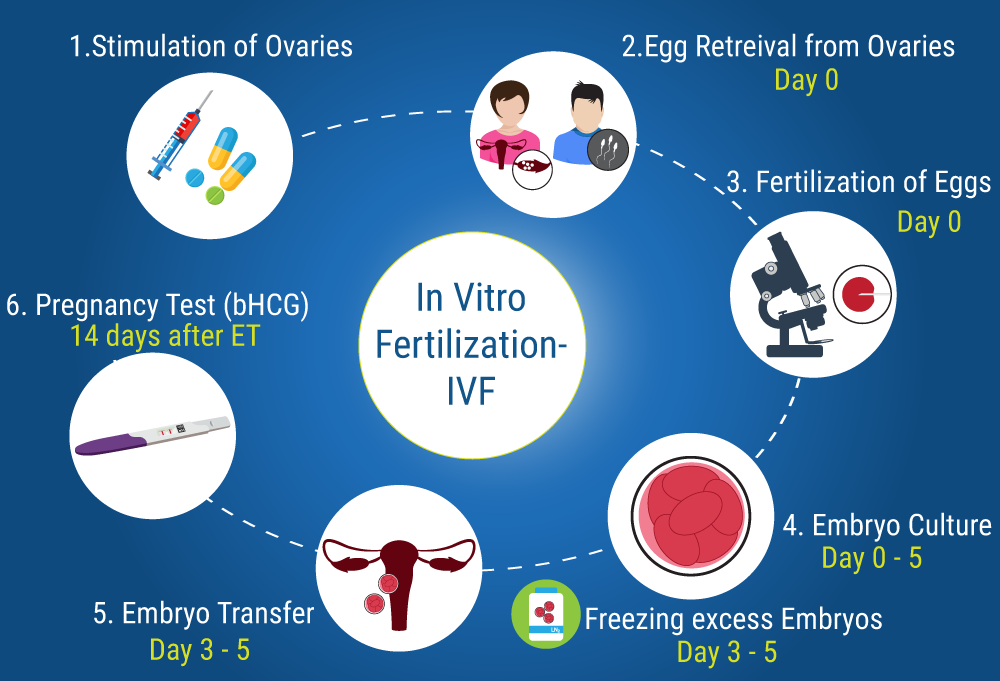
ART (Regulation) Act, 2021
Need for ART Act, 2021
To Standardise Protocols
- Many ART clinics have been running without regulation, which has implications for the health of those who undertake the procedure.
- It seeks to regulate and supervise Assisted Reproductive Technology (ART) clinics and ART banks, prevent misuse, adopt safe and ethical practices and so on.
To Protect Women and Children
- The oocyte (a cell in an ovary) donor needs to be supported by insurance coverage.
- Multiple embryo implantation needs to be regulated, and children born through ART need to be protected.
Provision of ART services
- Definition: ART includes all techniques that seek to obtain a pregnancy by handling the sperm or the oocyte (immature egg cell) outside the human body and transferring the gamete or the embryo into the reproductive system of a woman.
- These include gamete donation (of sperm or egg), in vitro fertilisation, and gestational surrogacy.
- ART services will be provided through:
- ART clinics, which offer ART-related treatments and procedures, and
- ART banks, which collect, screen and store gametes.
Registration of ART clinics and banks
- The bill proposes establishing a national registry and registration authority for all clinics and medical professionals in the field.
- It will help maintain a database of all clinics and medical professionals serving in the field.
- The Act requires every ART clinic and bank to be registered with the National Registry of Banks and Clinics of India.
- State governments will appoint registration authorities to facilitate the registration of clinics and banks.
- Clinics and banks will be registered only if they adhere to specific standards.
- The registration will be valid for five years and may be renewed.
Boards
- The National and State Boards constituted under the Surrogacy (Regulation) Act will also act as the National and State Boards for the regulation of ART services.
- Key functions of the National Board include:
- Advising the GOI on ART-related policy matters,
- Reviewing and monitoring the implementation of the Bill,
- Formulating a code of conduct and standards for ART clinics and banks, and
- Overseeing bodies constituted under the Bill.
- The State Boards will coordinate the enforcement of policies and guidelines for ART as per the recommendations, policies, and regulations of the National Board.
Eligibility criteria for commissioning parties
- ART services can be commissioned by married couples or women where:
- The woman is above the legal age of marriage and up to 50 years, and
- The man is above the legal age of marriage and up to 55 years.
- Married couples must also be infertile, i.e. unable to conceive after one year of unprotected coitus or suffer from any other proven medical condition that prevents conception.
Eligibility criteria for donors
- A bank can obtain semen from males between 21 and 55 years of age and eggs from females between 23 and 35 years of age.
- An egg donor should be an ever-married woman having at least one living child of her own (minimum three years of age).
- The woman can donate eggs only once in her life, and not more than seven eggs can be retrieved from her.
- A bank cannot supply the gamete of a single donor to more than one commissioning party (i.e. couples or single women seeking services).
Conditions for Offering Services
- ART procedures may only be carried out with the written consent of the commissioning parties and the donor.
- The commissioning party will be required to provide insurance coverage in favour of the egg donor (for any loss, damage, or death).
- Clinics are required to check for genetic diseases before implantation and are prohibited from providing any sex-selective services (e.g. sex determination).
Rights of a child born through ART
- A child born through ART will be deemed to be the commissioning couple’s biological child.
- The Child will be entitled to the rights and privileges available to a natural child of the commissioning couple.
- A donor will not have any parental rights over the child.
Duties of ART Clinics and Banks
- ART clinics and banks must share information related to:
- Enrolment of the commissioning parties and donors,
- Procedures being undertaken, and
- Outcome of the procedure with the National Registry.
- Further, they must maintain records of all donations for at least ten years, after which the records must be transferred to the National Registry.
- While using human gametes and embryos, ART clinics and banks must:
- Harvest eggs in the manner specified by regulations and
- Place such number of eggs or embryos in the uterus of the woman as may be specified by regulations.
Offences and penalties
- Offences under the Act include:
- Abandoning or exploiting children born through ART,
- Selling, purchasing, trading, or importing human embryos or gametes and
- Exploiting the commissioning couple, woman, or the gamete donor in any form.
- These offences will be punishable with a fine between five and ten lakh rupees for the first infringement.
- For subsequent Contraventions, these offences will be punishable with imprisonment between eight and twelve years and a fine between 10 and 20 lakh rupees.
- A court will take cognisance of an offence only on a complaint made by the National or State Board.
Key Issues and Analysis
Exclusion of Unmarried and Heterosexual Couples
- The Act excludes unmarried men, divorced men, widowed men, unmarried yet cohabiting heterosexual couples, trans persons and homosexual couples (whether married or cohabiting) from availing of ART services.
- This exclusion is relevant as the Surrogacy Act also excludes the persons mentioned above from recourse to surrogacy as a method of reproduction.
Reduces the Reproductive Choices
- The Act is also limited to those commissioning couples who are infertile.
- Thus, it is limited in its application and significantly reduces the reproductive choices of those excluded.
Impact on Availability of Suitable Donors
- Restricted Opportunities: The new provisions significantly limit the opportunities for ART couples to find suitable donors, affecting their chances of successful treatment.
- Increased Costs: The restrictions on donation attempts have the potential to increase costs for couples relying on assisted reproductive techniques.
- Challenges for Couples: The limitations pose challenges for couples in need of ART services, as finding compatible donors becomes more difficult.
Unregulated Prices
- The prices of the services are not regulated; this can certainly be remedied with simple directives.
Data sharing may violate the parties ‘right to privacy’
- The Act does not specify the purpose of collecting personal information and sharing it with the Registry.
- The ART Act restricts the number of times an egg donor may donate her eggs to once in her lifetime, So, it may be necessary to keep track of egg donors.
- However, it is unclear why the personal details of all other parties to the procedure are required.
Data Sharing in the ART Act
|
Mandatory collection of Aadhar details by ART banks may violate SC judgement
- ART banks must collect certain information about the donor, including name, address and Aadhar number.
- This may violate the SC’s Puttaswamy-II judgement.
- The SC ruled that the Aadhaar card/number may only be made mandatory for expenditure on a subsidy, benefit or service incurred from the Consolidated Fund of India.
No provisions for counselling and withdrawal of consent from donors
- ART clinics are required to provide counselling services to the commissioning parties.
- The Act does not contain similar provisions on counselling for donors.
- The ICMR guidelines on ART (2005) and biomedical research (2006) require doctors to provide counselling to donors before administering a procedure.
- Commissioning parties are allowed to withdraw consent before the embryo or gamete is transferred to the woman’s uterus.
- Donors have not been given similar rights to withdraw their consent.
- Both the ICMR guidelines (2006) and the 2014 Bill allowed donors to withdraw their consent at any time before implantation of the embryo or gamete in the woman’s uterus.
- Similarly, in the UK, the donor is permitted to withdraw consent before the embryo or gamete is used in treatment.
Regulations may set additional eligibility criteria for ART.
- The Act allows the GOI to prescribe additional eligibility conditions for intending couples, women and donors through rules.
- Should core features such as eligibility conditions be specified in the parent law, or should they be delegated to rule-making by the government?
Duplicacy
- Both Surrogacy and ART Acts will establish multiple registration bodies, which will result in duplication or, worse, lack of regulation.
- For example, a surrogacy clinic is not required to report surrogacy to the National Registry.
- Both the surrogacy and ART Acts have different definitions of infertility.
- The age of commissioning couples is different in both the Acts.
|
Surrogacy Act |
ART Act |
|
|
Eligibility to commission |
Indian couples:
|
|
Difference between the Surrogacy Act and the ART Act
|
Surrogacy Act |
ART Act |
| This relates to surrogacy, an infertility treatment where a third person, a woman, is the surrogate mother. | The commissioning couple can receive treatments themselves, and a third person is not always necessary. |
| Surrogacy is allowed for only Indian married couples. | ART procedures are open to married couples, live-in partners, single women, and also foreigners. |
| It prohibits the commissioning of surrogacy in India by foreigners or OCI or PIO cardholders, but NRIs holding Indian citizenship can avail of surrogacy. | Foreigners can visit India under medical tourism to avail of ART services. |
| There will be a National Surrogacy Board that will be involved in policymaking and act as a supervisory body, and State Boards that will act as executive bodies. | The ART Act provides for a National Board, with the powers vested in a civil court under the Code of Civil Procedure. |
| About 1000 clinics are practising surrogacy in India, according to the health ministry. | ART practising clinics are likely more than 40,000. |




![PMF IAS Environment for UPSC 2022-23 [paperback] PMF IAS [Nov 30, 2021]…](https://pmfias.b-cdn.net/wp-content/uploads/2024/04/pmfiasenvironmentforupsc2022-23paperbackpmfiasnov302021.jpg)
